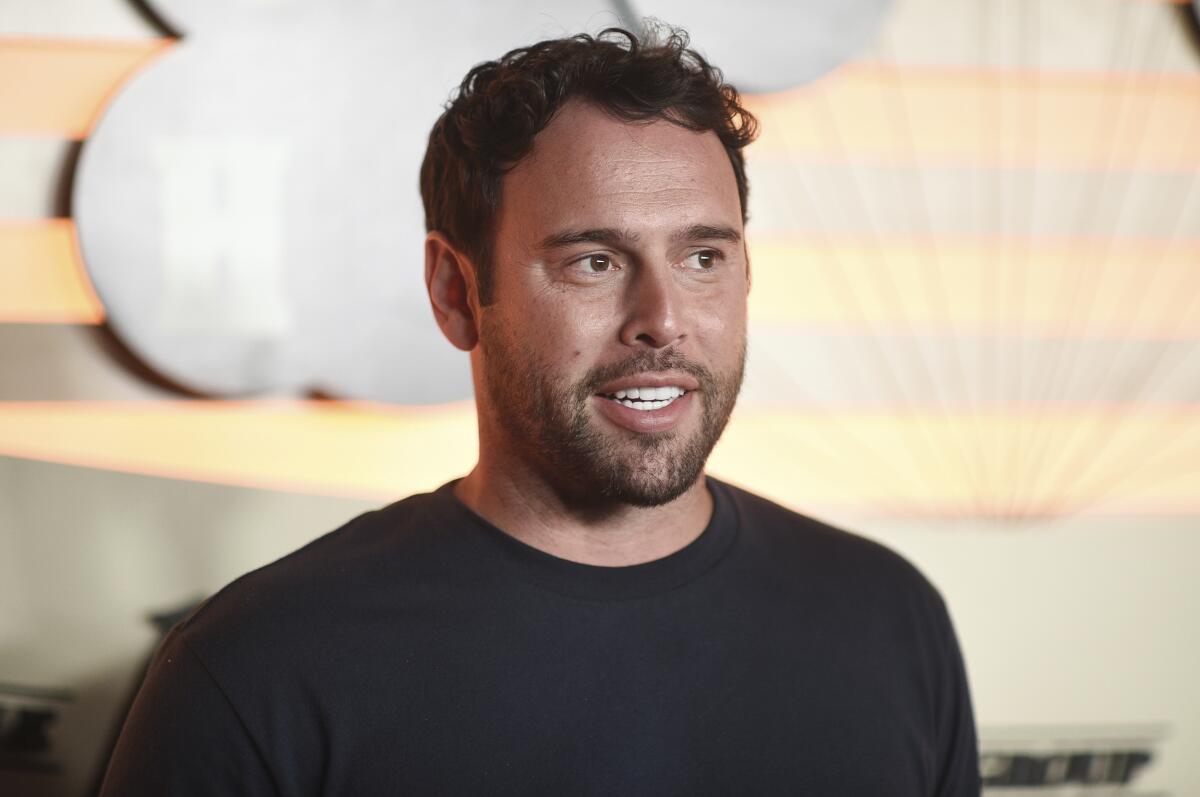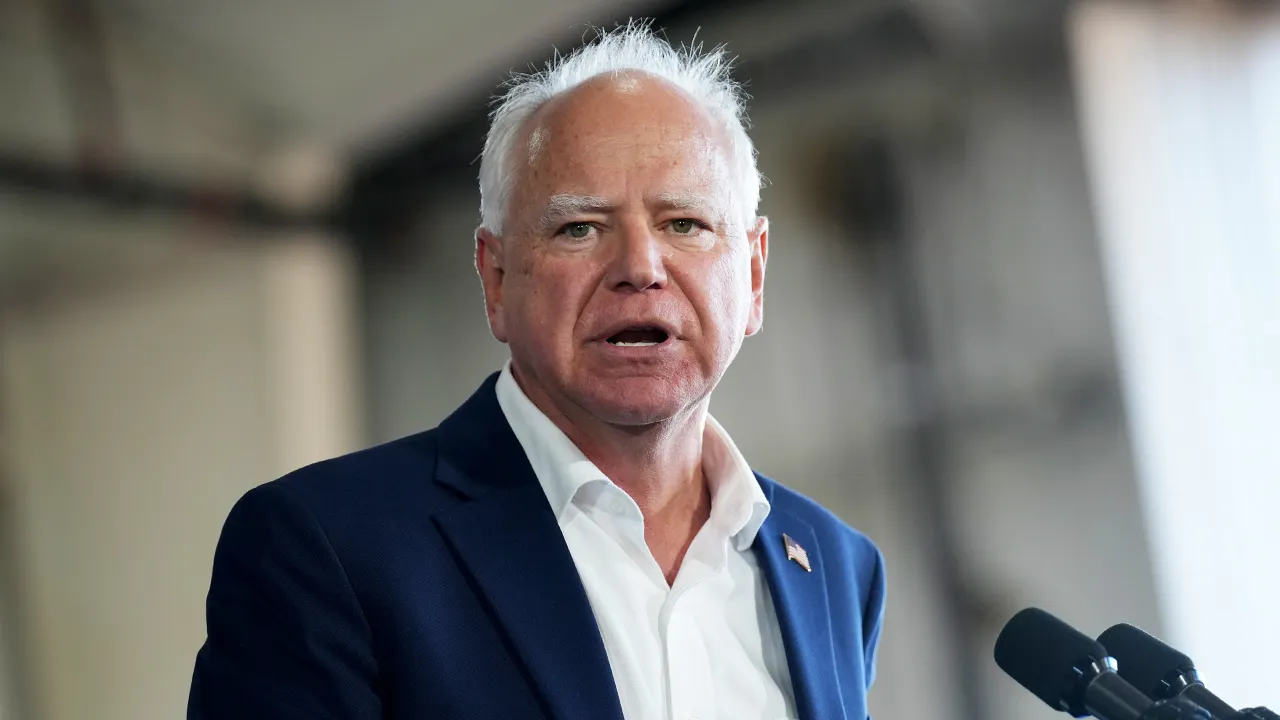Business
Judge denies motions to dismiss case by actress who claims CAA, Disney enabled assault by Harvey Weinstein

A New York Supreme Court judge on Monday denied motions by talent agency CAA, Walt Disney Co. and Miramax to dismiss actress Julia Ormond’s lawsuit against Harvey Weinstein for sexual battery.
The suit, filed last October, named CAA for negligence and breach of fiduciary duty, as well as Walt Disney Co. and Miramax, accusing them of negligent supervision and retention.
“The complaint sufficiently alleges that CAA failed to protect plaintiff from Weinstein, failing to warn her of his alleged reputation while at the same time negotiating the production company agreement between the plaintiff and Miramax, and later arranging the dinner meeting between plaintiff and Weinstein,” said the court in its ruling.
Disney owned Miramax at the time of the alleged assault.
“We are very pleased by the Court’s decision, which is a complete repudiation of CAA, Disney, and Miramax’s attempts to evade accountability for their failure to protect Julia Ormond from Harvey Weinstein. The case will now proceed to discovery, where, thanks to Ms. Ormond’s bravery, we will be able to expose the truth of how these powerful Hollywood companies enabled Harvey Weinstein,” said Ormond’s attorneys Meredith A. Firetog and Kevin Mintzer in a statement to The Times.
“We respectfully disagree with the Court’s ruling and continue to believe there is no legal or factual basis for Ms. Ormond’s claims against CAA,” said a spokesperson for the agency in a statement. “While we have deep compassion for Ms. Ormond and are incredibly disturbed by what she says she suffered at the hands of Weinstein, CAA did not learn of Weinstein’s sexually assaultive behavior until it became public knowledge decades later. As a result, the claim that CAA should have warned Ms. Ormond about Weinstein’s criminal conduct in December 1995 defies logic.”
Representatives for Disney were not immediately available for comment.
Ormond, who starred in such films as “Legends of the Fall” and the remake of “Sabrina,” alleged that the disgraced movie mogul sexually assaulted her in December 1995 after a business dinner in New York City, where the two were to discuss a project.
She further alleged that after she informed her agents Bryan Lourd and Kevin Huvane, currently CAA’s co-chairmen, they did nothing to help her and instead cautioned her about speaking out.
Lourd and Huvane were not named as defendants in the suit. However, their names were cited throughout the complaint.
“The men at CAA who represented Ormond knew about Weinstein. So too did Weinstein’s employers at Miramax and Disney,” the lawsuit states. “Brazenly, none of these prominent companies warned Ormond that Weinstein had a history of assaulting women because he was too important, too powerful, and made them too much money.”
Weinstein insisted on discussing a project at the Manhattan apartment Miramax provided for the English actor, part of her two-year, first-look deal with the company, according to the complaint.
Once there, Ormond, who was “inebriated” to the point she could not put the keys in the door, says despite her protests, Weinstein “stripped naked,” forced her to give him a massage, climbed on top of her, masturbated and then forced her “to perform oral sex on him.”
A few weeks after the alleged assault, Ormond traveled to Copenhagen to work on a film and was informed that Weinstein planned to visit her.
“Horrified,” according to the suit, she called her agents at CAA, Lourd and Huvane, to “plead with them to prevent Weinstein from coming to Copenhagen.” They declined to intervene, the suit states.
Ormond filed her lawsuit under the Adult Survivors Act, that was passed in New York in 2022. It established a one-year “lookback” window for survivors of sexual assault that occurred when they were over the age of 18, regardless of when it took place.
Weinstein’s attorney Imran H. Ansari, “categorically denie[d] the allegations made against him by Julia Ormond and he is prepared to vehemently defend himself,” according to a statement after the suit was filed.
At the time of the filing, CAA called the claims baseless.
The agency said that Ormond’s legal counsel approached them in March about the allegations. The Century City-based agency then hired attorney Loretta Lynch and her law firm, Paul, Weiss. The firm’s review “found nothing to support Ms. Ormond’s claims against CAA.”
Ormond’s attorneys asked CAA to pay $15 million in exchange for Ormond not making public allegations against the agency, which it rejected, CAA said.
At the Bloomberg Screentime conference last year, Lourd said: “We were falsely accused of something that we did not do and we are going to address those accusations in court in a proper forum.”
In April, a New York appellate court decided to overturn Weinstein’s rape conviction in a separate case, saying a state judge erred in allowing three women to testify at trial despite no charges being filed against the movie mogul in connection with their accusations.
Last month, Gov. Gavin Newsom signed an extradition warrant seeking the transfer of Harvey Weinstein from custody in New York to California, where he was previously convicted on rape charges.
Staff writer Wendy Lee contributed to this report

Business
To lease or to buy a car, that is the question

Dear Liz: You recently answered a question about whether to finance a car purchase. I bought a car in 1963 whose wheels couldn’t stay in alignment. By the time I had driven it 20,000 miles, I was on my third set of new tires. My next car had other repeated problems. Solution? Since then I have always leased and when the lease is up, I buy the car if it has been reliable. By then, the car is cheaper.
Answer: There are at least two ways to view your approach to cars. One is that you found an approach that suits you. The other is that you’ve been overpaying for vehicles for decades based on two long-ago experiences. Meanwhile, car reliability has steadily — and dramatically — improved.
Although there are exceptions, leasing is generally the most expensive way to pay for a car. And buying cars after the lease is over also can be problematic if the buyout price, which typically is set at the beginning of the lease, is higher than the vehicle’s market value.
On the surface, leasing can seem like a good deal. The car’s always under warranty and unlikely to need repairs. Lease payments are often lower than loan payments, since you’re not paying principal. That means you can drive a more expensive car than you could afford if you were paying cash or financing.
But that also means you don’t have any equity in the vehicle. Plus, leasing means you’re paying for cars during their first few years on the road, when they’re rapidly depreciating.
Sometimes manufacturers sweeten lease deals to make them less expensive than an equivalent loan, but usually you’ll pay a lot more over time leasing than you would buying.
What to do with a drawer full of unused credit cards?
Dear Liz: At 75 and 79, my husband and I have no plans to buy a new car or property. We own our home and cars. We have excellent credit ratings. We use one major credit card. I’m consolidating our financial life for our heirs. We have a drawer full of cards we never use. Is there any reason not to just cancel these cards and save our heirs the trouble? Should I care if my 850 credit score tanks?
Answer: At this point, simplifying your finances probably makes more sense than trying to keep your credit scores as high as they can possibly be.
Cards you aren’t using still need to be monitored for fraud, which is a hassle, plus you may be paying unnecessary annual fees. Reducing the number of accounts should make your life easier, but don’t go too far.
As explained in previous columns, each spouse should have at least one card on which they are the primary account holder. A spouse who is an authorized user often loses access to the card when the primary account holder dies and card issuers close the account. Few credit card issuers offer joint accounts these days, so you should determine who is the primary account holder and who is the authorized user on each of your cards before deciding which to close.
You can reduce the damage to your scores by trying to preserve as much of your current credit limits as possible. Ideally, the cards you keep will be the ones with the highest limits. If you’re closing other accounts at your chosen issuer, you can ask that the credit limits for the shuttered cards be transferred to the card you’re keeping.
Eyeing a second divorce and the first ex’s Social Security
Dear Liz: I was married for 12 years and have remarried. If I divorce again, am I eligible for my first husband’s Social Security?
Answer: People who were married for at least 10 years and who are currently unmarried may be eligible for divorced spousal benefits based on their ex’s work record. So if you divorce, you may be eligible for up to half of your first husband’s benefit at his full retirement age — assuming that this divorced spousal benefit is more than your own retirement benefit.
Applying before your own full retirement age means your divorced spousal benefit would be reduced. The benefit also would be subject to the earnings test, which reduces your benefit by $1 for every $2 you earn over a certain amount, which in 2024 is $22,320.
Liz Weston, Certified Financial Planner, is a personal finance columnist. Questions may be sent to her at 3940 Laurel Canyon, No. 238, Studio City, CA 91604, or by using the “Contact” form at asklizweston.com.
Business
The future of shopping is here with digital price tags, and some are worried

The price tag is going digital.
Walmart is leading the charge into the future of in-store shopping as the the mega-retailer and other chains, including grocery giant Kroger, are replacing paper-and-ink price tags with electronic labels that can be used to quickly raise or lower the price of an item.
Electronic shelf labels are already common in Europe and will become wider spread in the U.S., with Walmart planning to implement the labels in 2,300 stores by 2026. Several Walmarts in California already feature the new technology, a spokesperson said.
It is a transition that’s prompted concerns that the technology opens the door to price gouging despite retailers’ assurances that the labels won’t be used to jack up costs.
With the electronic labels, employees can update prices on products in a few clicks, sparing them the time-consuming task of making printed labels and putting them in place, retailers say. But the increased efficiency has been met with wariness among consumer advocates, including U.S. Sens. Elizabeth Warren (D-Mass.) and Bob Casey (D-Pa.), who worry that the ability to easily change prices paves the way for grocers to take advantage of customers.
“These digital price tags may enable Kroger and other grocery chains to transition to ‘dynamic pricing,’ in which the price of basic household goods could surge based on the time of day, the weather, or other transitory events,” the senators wrote in a letter to Kroger Chief Executive Rodney McMullen.
Dynamic pricing could mean raising the cost of ice cream on a hot day, for example, or quickly raising the cost of water and canned goods before an upcoming storm. Kroger and Walmart said they have no plans to implement dynamic pricing, and added that electronic shelf labels will only be used to help lower costs.
“Kroger’s business model is to lower prices over time so that more customers shop with us,” a Kroger spokesperson said. “Any test of electronic shelf tags is to lower prices more for customers where it matters most. To suggest otherwise is not true.”
A Walmart spokesperson said updates to the electronic tags will be used to reflect lower prices for items on sale or final clearance. Prices will not change throughout the day, she said.
Walmart’s low prices are serving the company well as consumers navigate inflation and seek bargains for everyday goods. On Thursday, the company released its earnings report for the second quarter, which exceeded expectations. Comparable-store sales — which include sales online and at stores open for at least 12 months — rose 4.2% in the U.S. That compares with 3.8% in the first quarter and 4% in the fourth quarter last year. The company’s stock price rose 6.5% on Thursday to $73.18.
Grocery industry analyst Phil Lempert said the digital tags will help save time and money amid a labor shortage, but they could lead grocery chains down a slippery slope.
“If you can make it electronic you can take a lot of costs out of the system, and that’s great,” Lempert said. “But once that’s installed, and regardless of what any retailer is going to say, it’s now easy to change prices.”
Santiago Gallino, a professor specializing in retail management at the University of Pennsylvania, said he hasn’t seen signs that retailers plan to use electronic shelf labels for surge pricing.
“In my conversation with retailers, it’s clear that those who are pushing towards this technology are mainly trying to drive efficiency up in the stores and try to reduce costs,” Gallino said. “Grocery retailers operate on very thin margins, so every time they find technology that can help them save in labor, they will do that.”
What grocery stores save in labor they may lose in customer trust and loyalty, however, said RetailWire CEO Dominick Miserandino.
“Consumers are exceptionally skeptical,” he said. “When most of the consumer reaction to any product seems to be overwhelmingly negative, it’s probably a product that one might want to reevaluate quickly.”
With years of high inflation having pushed up prices for everyday goods, consumers are especially wary of price gouging, Miserandino said. Fast-food chain Wendy’s faced heavy backlash earlier this year over new digital menu boards and the prospect of dynamic pricing.
Along with the senators’ letter, Vice President Kamala Harris underscored the political potency of the issue with word she plans to voice support for a federal ban on corporate price gouging on groceries in a speech later this week, the New York Times reported.
The Associated Press contributed to this report.
Business
Exhibit, memorial in L.A. re-create terror attack at Israeli music festival

In a cavernous, 50,000-square-foot industrial event space in Culver City stand the charred remnants of six cars destroyed by rocket-propelled grenade fire. There are portable toilet stalls, their doors riddled with bullet holes. There are tents, camping gear, clothes hanging on lines and tables labeled “Lost and Found” filled with rows of everyday items such as shoes, sunglasses, bags, toiletries and keys.
These and hundreds of other items — including a large canopy under which 3,000 partygoers danced — were salvaged after the Hamas-led terror attack on the Nova Music Festival in Israel on Oct. 7.
They are part of the “Nova Music Festival Exhibition: October 7th 06:29 AM — the Moment Music Stood Still,” an immersive memorial that re-creates a sense of the horrors that unfolded early that morning and its aftermath while honoring victims and survivors.
As festivalgoers danced, a barrage of rockets landed and thousands of Hamas gunmen and other insurgents from the Gaza Strip swarmed across the border into southern Israel. The attack killed about 1,200, including 405 Nova attendees, many of whom were ambushed as they attempted to escape in their cars or to hide in bomb shelters and nearby fields. More than 250 were abducted that day; 45 were festival participants — some of whom remain in captivity in Gaza.
Interspersed among the artifacts is harrowing real-time video taken by attendees — unknown to them that they were dancing in the last moments just as the onslaught began — as well as body-cam footage taken by Hamas terrorists, who then posted the contents online.
The burnt remnants of a car hit by rocket-propelled grenades were brought from Israel as part of the installation.
(Alexi Rosenfeld / Getty Images)
“I love everyone. I want to go home. I already miss everyone,” festival survivor Noa Kalash says in phone footage made while she hid during the attack.
In a heartbreaking audio exchange, Meirav Gonen tells her daughter Romi, who is shot and trying to flee, “Romily, you’re not alone. You’re with me, my beautiful one. Everything is OK.” Romi, who turns 24 on Sunday, was taken captive and remains in Gaza.
“Dad, I’m calling you from the phone of a Jew. I just killed her and her husband,” one of the terrorists says in a call broadcast on a video screen.
The exhibition is spread over several rooms and includes video testimonials of survivors, first responders and family members of those still held hostage. Portraits of those who were killed that day line three walls.
Survivors of the festival are on-site to share their experiences.
“I hope that people take out of this place the message of what happened to human beings,” said Millet Ben Haim, 28, who hid for more than six hours in bushes with her friends before being rescued.
“We’re shining a light on these atrocities not to rattle people but to ensure that it doesn’t happen again.”
Also, she said, the goal is to focus on “love, compassion and life rather than on darkness and not to let hatred change our hearts.”
Irish Israelis Emily and Laura Damti want people to know about their younger sister Kim, 22, whom they described as a beautiful, gifted student. She was killed while seeking refuge in a bomb shelter with her friend Omer Wenkert, 23, who was taken hostage in Gaza, where he remains. “She was a radiant presence of positive energy and golden curls,” Emily said.
Scooter Braun, chief executive of entertainment company Hybe America and a music manager whose clients have included Justin Bieber and Ariana Grande, was instrumental in bringing the exhibit to the U.S., as were Omri Sassi and Ofir Amir, co-founders and producers of the Nova Music Festival, creative director Reut Feingold and American partners Joe Teplow and Josh Kadden.
Braun said he was moved to act, angered at what he saw as the music industry’s silence after the massacre.
In 2017, two weeks after a suicide bomber blew himself up and killed 22 people at Grande’s concert in Manchester, England, Braun helped organize the all-star One Love Manchester benefit concert and television special, which raised nearly $3 million to help victims.
“That is what’s so frustrating to me,” he said. “We had no issue stepping forward against an ideology, the same ideology that caused this and demanding that this is not acceptable.”
Braun saw this as an opportunity to coalesce around shared values and humanity.
“I started to speak out and try to make people hear each other. I believe that we aren’t living in the Middle East, and this is a place where people of all shapes, sizes and colors come to find a new life. And I thought, ‘Why are we yelling at each other here but expecting them to have peace there?’ We need to set the example.”

Music manager Scooter Braun was instrumental in bringing the exhibition to the United States.
(Richard Shotwell / Invision / Associated Press)
In December, Braun flew to Israel. He visited Kibbutz Beeri, a community left in ruins by the Hamas-led attacks, where residents were tortured, killed or abducted. He also visited the field where the festival was held. “These people were the hippies of the country. They were peace-loving people who wanted better for everyone. And they were just massacred.”
Braun met with survivors at the Nova Healing Camp who invited him to an exhibition in Tel Aviv. It was a small re-creation of the festival set up in a hangar.
“It was simply a place for people to go and think of their loved ones and everyone who had been affected,” he said.
“When I saw it, I immediately thought to myself, ‘This is what I’ve been looking for to help tell this story because I just want to show people each other’s humanity.’ I think we all love music. So this is a way to show people, step out of the politics and realize what happened here.”
Although the organizers insist the exhibit is neither political theater nor agitprop, it was met with anti-Israel demonstrations in New York in June. Protesters lighted flares, waved banners and shouted slogans such as “Long live the Intifada,” “Israel go to hell” and “The Zionists are not Jews and not humans,” according to videos posted on social media and news reports.
The Oct. 7 attack set off Israel’s campaign in Gaza aimed at destroying Hamas. The death toll among Palestinians has risen to nearly 40,000, according to the health ministry there, whose numbers do not demarcate between civilians and combatants. Much of Gaza’s 2.3-million population has been displaced and large parts of its cities have been reduced to rubble.
Nerdeen Kiswani, a pro-Palestinian activist, called the exhibition “propganda used to justify the genocide in Palestine” on her X account and wrote that the Nova festival was “a rave next to a concentration camp.”
The protest at the exhibition elicited a flood of denunciations, including from the White House, Sen. Chuck Schumer (D-N.Y.) and New York Atty. Gen. Letitia James. U.S. Rep. Alexandria Ocasio-Cortez (D-N.Y.) called the protest “atrocious antisemitism — plain and simple.”
Braun responded to the demonstration by extending the exhibition an additional week.
More than 100,000 people attended the exhibit during its New York run, including Mayor Eric Adams and Gov. Kathy Hochul.
Of the protests, Braun says, “I think free speech was designed to create a dialogue between us. If someone is conscious and they want to protest, then I challenge them to be considerate enough to walk through the exhibit and give it the respect it deserves and maybe see a different point of view. I want everyone to see this. I want everyone to realize that we need to start seeing each other’s humanity and realizing music must be a safe place and see ourselves in this festival.”

Photos of festivalgoers killed and taken captive by Hamas-led militants during their attack on Israel last year populate the field where the Nova festival was held.
(Ohad Zwigenberg / Associated Press)
The exhibition is expected to be in L.A. through mid-October. Braun said organizers will commemorate the anniversary of the attacks on Oct. 7. During the exhibit’s run, educational events are planned with a focus on outreach to different communities in Los Angeles.
The organizers said they hope to bring the exhibition to other locations, including Miami, Toronto and Washington, D.C.
In the final room of the exhibit, a neon sign reads, “We will dance again.”
“That is not just for us,” Braun said. “That is for all people. We want to dance with all people. And I think that that message is what needs to be heard in these times.”
The Nova exhibition opens to the public Saturday. The privately funded exhibit is selling tickets for $8, $18, $36, $72 or $180, and students can attend free of charge; all proceeds go to the Tribe of Nova Foundation, an Israeli nonprofit and an IRS-approved U.S. public charity initiative, earmarked for medical and mental health treatment and other support projects for victims and families of the Oct. 7 attacks.
-

 Ohio6 days ago
Ohio6 days agoOhio taxpayers sent families $966 million for private school tuition: Capitol Letter
-

 World7 days ago
World7 days agoWhat could an EU Commissioner do to tackle the housing crisis?
-

 Politics1 week ago
Politics1 week agoTim Walz 'misspoke' about using weapons ‘in war,' Harris campaign says: report
-

 Politics1 week ago
Politics1 week agoGOP states sue to stop Biden admin extending Obamacare to illegal immigrants
-

 Politics1 week ago
Politics1 week agoTrump legal cases in limbo after SCOTUS immunity ruling, freeing up schedule to campaign
-

 News1 week ago
News1 week agoPhotos: Family of Michael Brown Jr. marches on Ferguson 10 years later
-

 News1 week ago
News1 week agoCross-Tabs: August 2024 Times/Siena Poll of the Likely Electorate
-

 News7 days ago
News7 days agoFull Trump-Musk Interview: Assassination Bid, Iran-Israel, Russia-Ukraine, Kamala-Biden, US Election



:max_bytes(150000):strip_icc():focal(749x0:751x2)/BEACH-HOUSE-FLOATS-AWAY900-08192024-d9196ec0ee304e3aa8b023338a065580.jpg)










